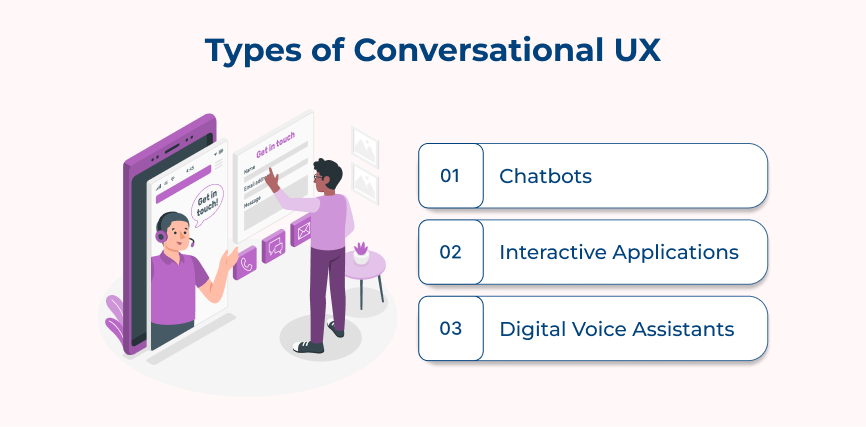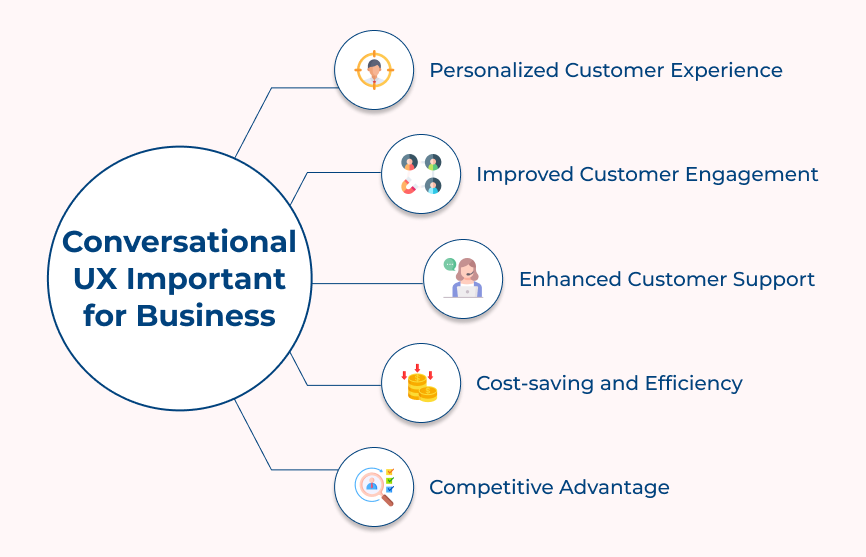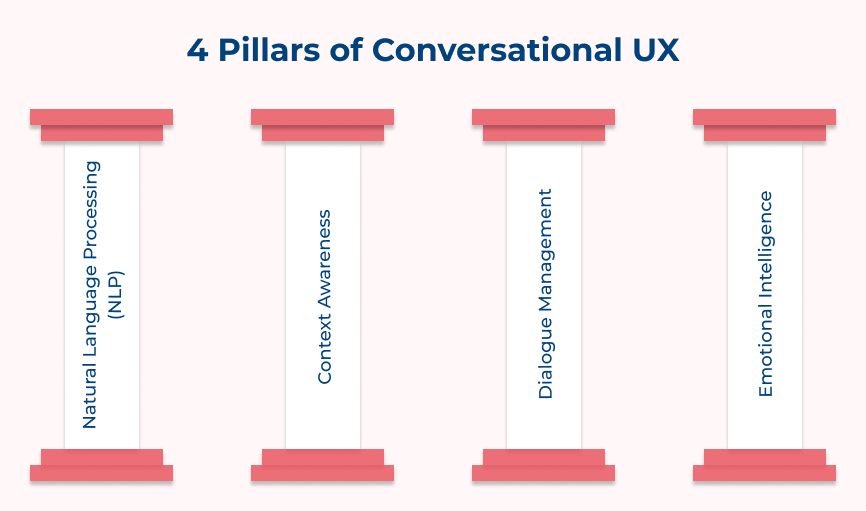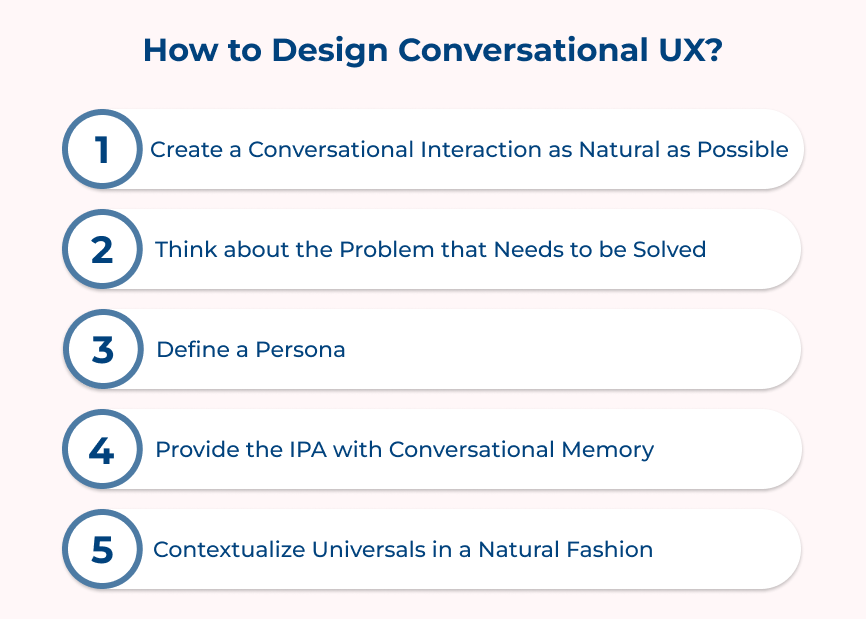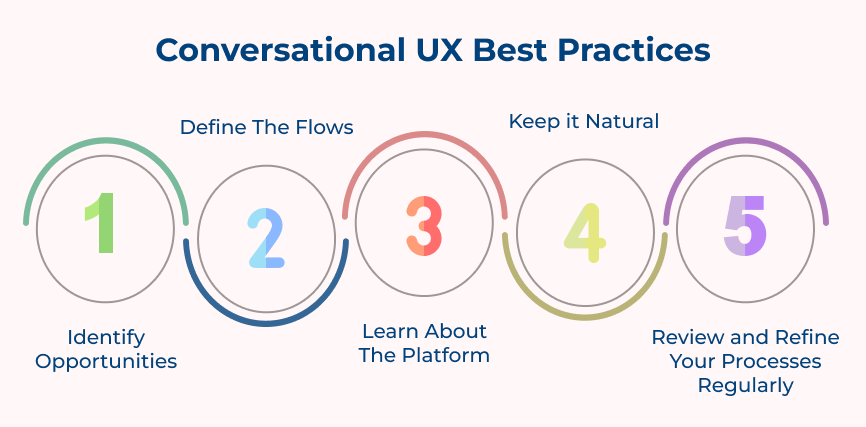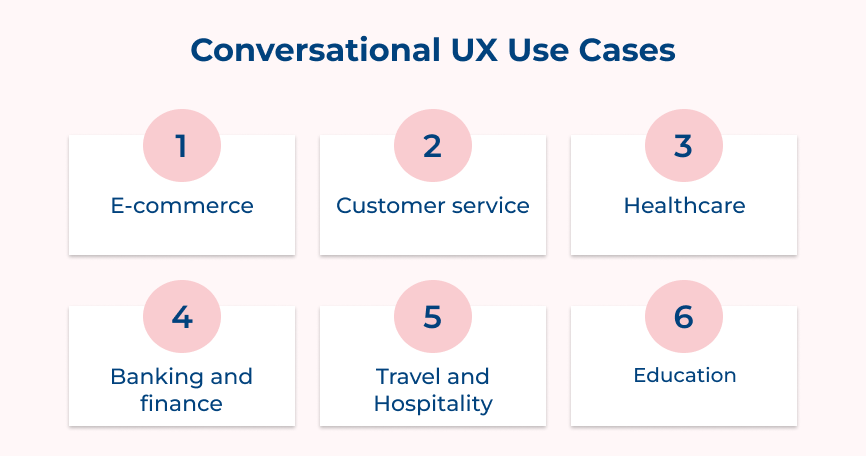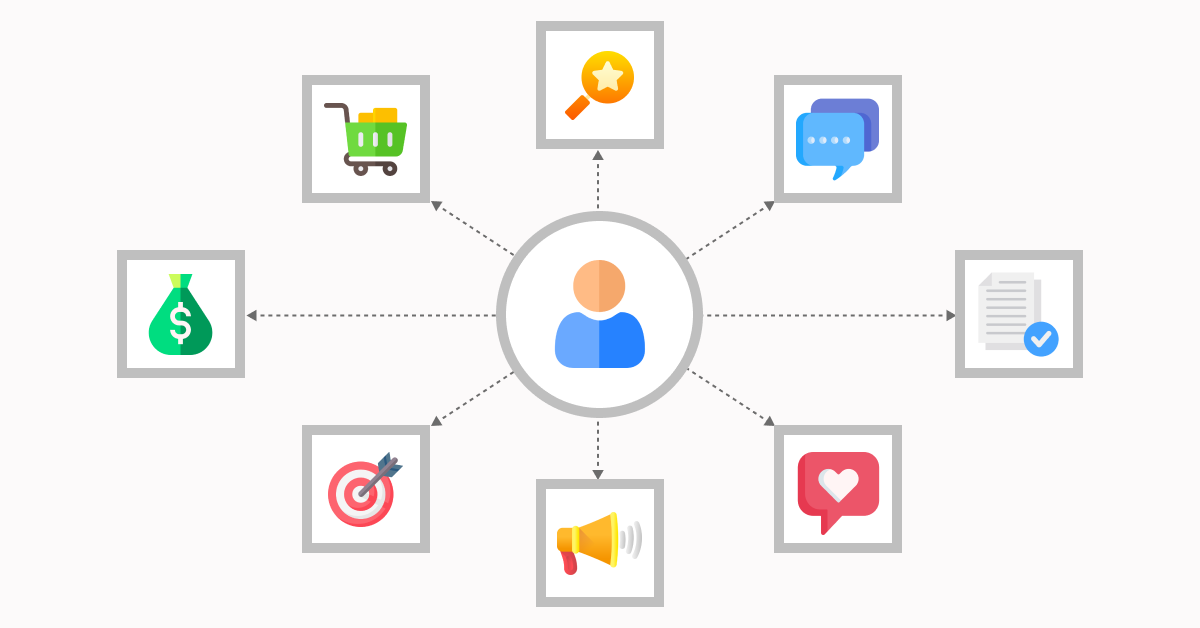1. Identify Opportunities
When it comes to implementing conversational UX technology, one important best practice is to identify opportunities for user engagement. It involves understanding the user’s needs and providing relevant information or solutions within the conversation. Being proactive in identifying opportunities enables businesses to create a more seamless and efficient user experience.
Analyzing user interactions and patterns enables businesses to identify common pain points or questions and address them proactively. Let’s say a user is browsing for a specific product, the conversational interface can offer suggestions or provide additional information to guide the user’s decision-making process.
How to implement:
- One approach is through data analysis and machine learning algorithms that can offer personalized recommendations.
- Incorporate proactive prompts within the conversation such as asking if the user needs assistance or providing quick access to relevant resources.
2. Define the flows
Defining the flows involves mapping out the different paths and possible user interactions within the conversational interface. It includes designing a clear structure, creating logical branching and anticipating user inputs. Implementing the best practice is highly beneficial for conversational user experience.
Businesses get to ensure that the conversation with the user feels intuitive, guiding them through the interaction in a way that feels natural and effortless. Defining the flows can minimize user confusion, prevent errors and boost overall user satisfaction with the conversational interface.
How to implement:
- Clearly define the main goals and purpose of the conversation. Then outline different user intents and create a dialogue flowchart.
- Use concise user-friendly language and incorporate visual cues like prompts.
3. Learn About the Platform
When it comes to implementing conversational user experience (UX), one crucial best practice is to learn about the platform you are designing for. Understanding the platform allows businesses to tailor their conversational interactions to fit seamlessly within its framework.
Learning about the platform helps businesses optimize their conversational UX design to provide a smooth and intuitive user experience. The understanding allows them to make informed decisions about conversation flow, message formatting and interaction design.
How to implement:
- Start by thoroughly exploring the platform’s documentation, guidelines and resources.
- Familiarize yourself with user research and behavior patterns specific to the platform.
4. Keep it natural
One key best practice in conversational UX is to “keep it natural,” ensuring the conversation feels human-like and authentic. It means avoiding robotic or overly formal language and instead using phrases that people commonly use in everyday conversations. Keeping the conversation natural is useful because it helps users feel more comfortable and engaged.
When the language feels conversational, users are more likely to trust the technology and continue the conversation. It also reduces the learning curve for users as they don’t have to adapt to a new way of communicating. Keeping it natural enables conversational user experience to enhance user engagement, build trust and provide a more intuitive user experience.
Additional tips:
- Developers can focus on using conversational language patterns such as using contractions, asking open-ended questions and providing concise responses.
- Avoid jargon, technical terms and complex sentence structures that can confuse users.
5. Review and Refine your Processes Regularly
An essential best practice to follow is to review and refine their processes regularly. It involves consistently evaluating and improving their conversational user experience strategies to ensure they align with the ever-changing expectations of users. Regularly reviewing the processes enables businesses to identify any gaps, pain points or areas for improvement.
Reviewing and refining the process is significant for successful conversational UX as it allows businesses to stay ahead of the curve and deliver a seamless user experience. Regular reviews help to analyze user feedback, identify patterns and make essential adjustments to enhance the conversational flow. It ensures that chatbots, voice assistants or any other conversational tools provide intuitive interactions.
Pro tips:
- Test the conversational UX with real users to uncover any usability issues or confusion.
- Stay updated with the latest trends and innovations in conversational UX to adapt the processes accordingly.
Conversational UX Use Cases
Explore diverse use cases of conversational UX across a variety of industries, revealing how adopting this technology can not only transform user experiences but also propel businesses to new heights.






